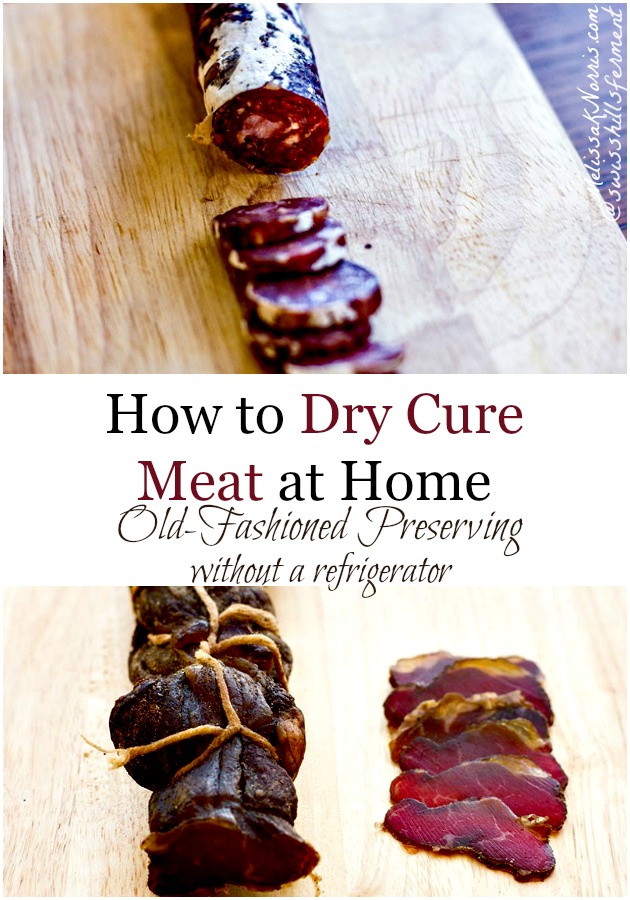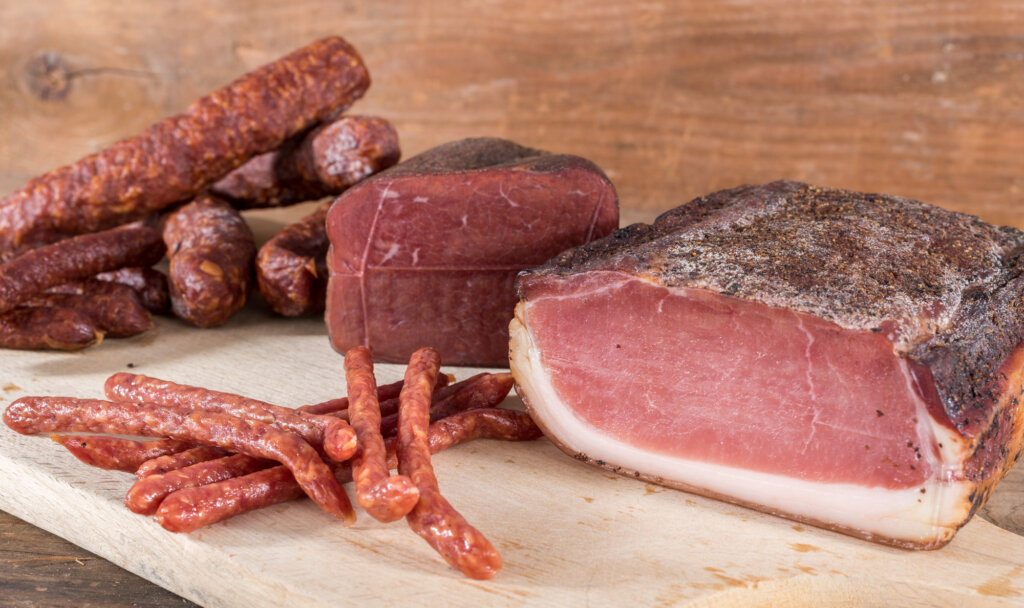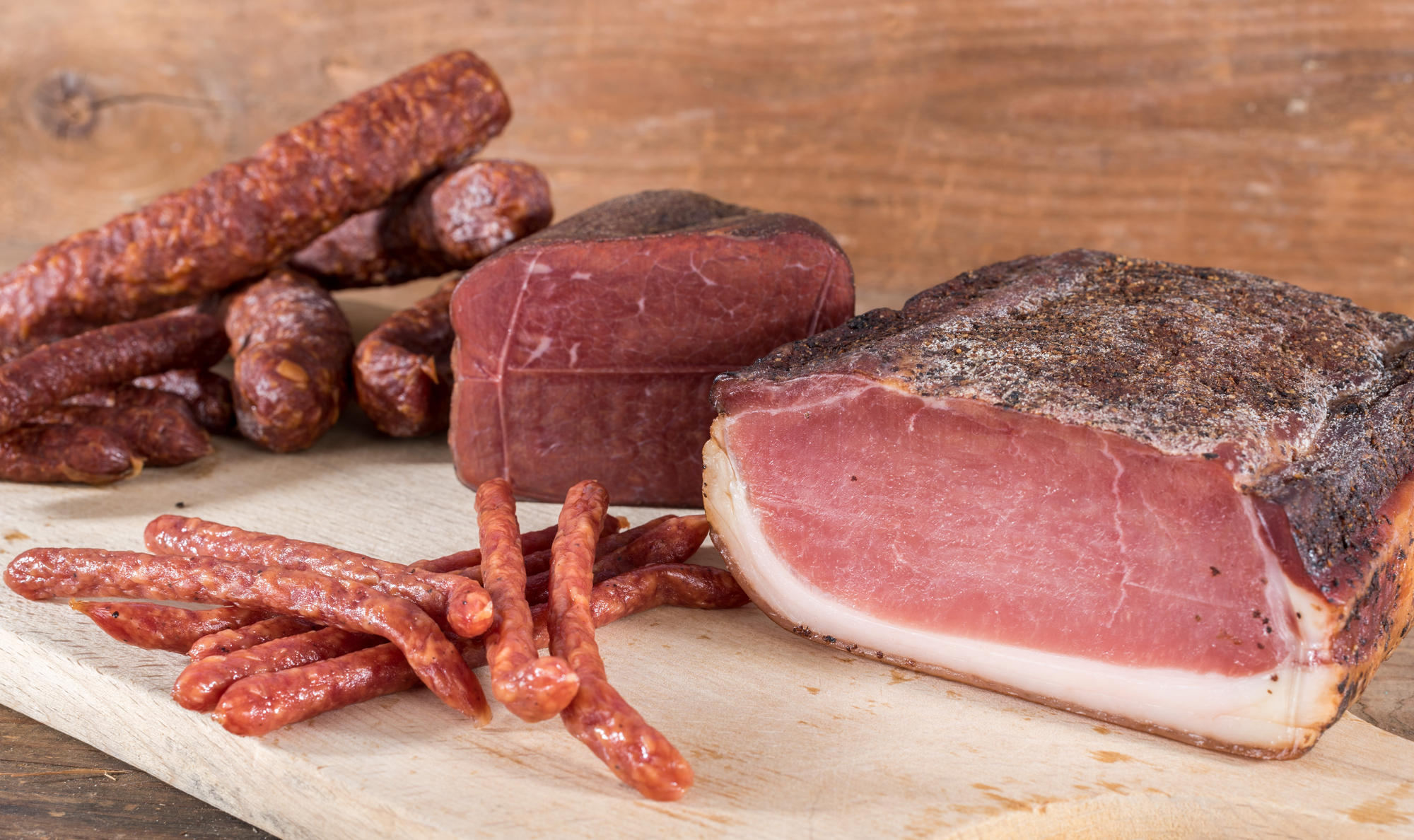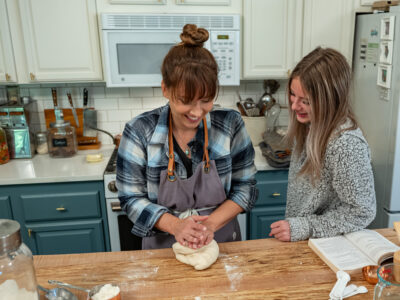Table of Contents[Hide][Show]
Welcome!
One of the old forms of food preservation is fermenting and curing meat. It’s also one of the tastiest in artisan salamis, pepperoni, aged cheeses, and of course, bacon, just to name a few. Not only does fermenting add preservation to the meat, but it adds flavor, flavor. Need I repeat it again.
If learning how to do things the old-fashioned way, bringing back traditional skills and learning true art forms, or just plain eating delicious foods that you know where they came from and went into them, then you my friend, are in the right place. Let’s raise our cheeses and pepperoni together!

Today we’re talking about the art of using salt and fermentation to preserve your meat. Many people use the freezer or canning to preserve their foods, and while I’m a die hard Mason jar and canning addict, looking back at older forms of food preservation is just as important.
The art of fermenting is using the good bacteria (and salt with meats or dry curing) to give flavor and preservation to the meat, along with drawing out the moisture, which allows it to be a form of preservation.
Listen to this post (just push play below) and all our episodes of the
Pioneering Today Podcast while you’re on the go, scrubbing the house, cooking up dinner (can I get an invite?), or mucking out stalls! I post new episodes Friday mornings. You can subscribe via RSS and receive every episode for free.![]()
Or subscribe via Itunes
Karen and James take home fermentation to rival the best artisan meat shops with forms of sausages, salamis, pepperonis, bacon, cheeses, yogurts, sourdoughs, and more, all from home! Welcome guys!
I’ve never fermented or done dry curing at home, so walk us through the process. I’ve been doing vegetable ferments, and yogurt and kefir for a few years now, but the meat is new for me.
Advantages to Fermented and Dry Cured Meat
Cured meat increases in flavor as it ages, as opposed to time in the freezer where over time your meat slowly degrades. Hanging and aging your whole muscles cuts and salami it concentrates the flavors and gives it a more intense flavor process. Plus, there’s the cool factor of being able to have shelf stable meat cured like the pioneers did.
How to Dry Cure Meat at Home
Purchase a culture specifically for meat SausageMaker.com or ButcherPacker.com. You can keep them in the freezer until you’re ready to do your meat.
The easiest way to preserve your meat is taking a whole muscle cut, make a salt and spice rub and cover it with the rub, and put it in the fridge for a few days. This way you don’t have to use nitrates or any special ingredients.
After a few days, when the salt has had a chance to get in there and draw out some of the moisture, hang it in a controlled environment at 60 degrees Farenheit with 70% humidity and let it dry until it’s lost about 30% of its water weight. That is preserved traditionally and you can eat it raw.

Resources for Dry Curing Meat at Home
Kitchen Scale– digital kitchen scale weighingup to 18 pounds at a time to make sure you can accurately tell when 30% moisture loss has occured.
Salt This is a pink Himalayan sea salt with no additives
Curing Salt– for use in ground up cured meats to help prevent the growth of botulism
The Cave – unit that allows you to control the temperature and humidity on any refrigerator or freezer.
Charcuterie: The Craft of Salting, Smoking and Curing -the book on how to cure meats at home.
Three FREE Recipes on How to Dry Cure Meat at Home- homemade pepperoni, salami, and prosciutto
How long do you let your muscle cut cure?
Prosciutto cuts can take up to a whole year, but smaller cuts don’t take as long. It depends on when it looses the 30% of its water weight. So you need to weigh the cut going in and then after its aged.
You can make Panchetta, which you usually cook, so if you cook it, and don’t eat it raw, then the 30% weight loss isn’t as crucial.
How do you store your cured meat and how long is it good for?
You can continue to store it in The Cave to continue to age it and concentrating the flavors. If you keep curing it will get really hard, otherwise you can store it in your fridge. Lowering the temperature slows down the aging. You can freeze it as well.
Once the meat is completely dry cured, it is shelf stable. You can keep it out on the counter. But to keep it as palatable as possible, you store it in the fridge or freezer to extend the shelf life and keep it from drying out too much.
Karen says they take they’re salami camping and don’t worry about keeping it in the fridge.
What cuts are a whole muscle cut?
The most popular would be your back leg of a pig, deer, or lamb. You can do something smaller like a loin or neck muscle. Just a whole muscle group, just follow the line and separate that muscle from the rest of the muscle groups. This way you don’t need a grinder.
A grinder is a small investment and you can find both manual and electric
meat grinders here–>stainless steel meat grinder
You can take any piece of meat and do this process of salting and dry curing it.
Back when people naturally cured their own meant, they’d use an basement, cellar, or attic.
You want a slightly warmer temperature so the good bacteria blooms and forces the bad bacteria out, and not being to cold helps with this.
You can use cheese cloth to wrap your meat while its hanging if its in an open environment like a basement or attic. For ease and safety, a contained chamber is best, not only to keep the bugs off, but to help with humidity and temperature levels.
Karen and James created a product, called The Cave, to control your humidity and temperature that attaches onto any refrigerator or freezer. It has a touch screen that allows you to set the humidity and temperature for dry curing meat, cheeses, and even culturing yogurt and sourdough. It has a wireless app so you can easily change the settings if you’re not home.
Right now (thru June 8, 2016) they have a kickstarter campaign going for the Cave including some special kits and e-books.
The fridge or freezer you put it on should be a single unit (no separate freezer) and the heater for warm cultures works best at 10 square feet.
With cheese and meat, if it gets to dry on the outer layer of your meat and cheeses then it creates a hard crust and that hard crust traps the moisture inside and creates a safety issue. This is why the humidity level is so important.
This is also true of your cheeses, if the good mold doesn’t start to form. We had some disasters in the first few years, before The Cave, which is why we ended up creating.
How to Make Bacon at Home
Take your pork belly and throw it in a container with spices, maple syrup or brown sugar is a favorite, and put it in the fridge and flip it once a day for a week. Then throw it in the smoker or in the oven and cook it to a set temperature and you’ve got your bacon.
On the Kickstarter campaign is bacon making kit, both ginger garlic and apple cinnamon bacon.
Salt Safety in Dry Curing
Again, you really need some type of scale. You need 2.5% percent of the weight of the meat to salt ratio, if the meat is 100 grams then you need 2.5 grams of salt to the meat.
If you’re grinding the meat you need to include some type of sodium nitrate or pink salt, and it’s .25% in order to prevent botulism. Nitrates are controversial, but our opinion is we’d much rather not die of botulism if we’re aging salami, the nitrates protect against that.
You don’t need to use nitrates in a whole muscle cut. Unless, you’re rolling up panchetta, in that type some of the meat has been exposed to oxygen, and some hasn’t. Nitrates are needed when the meat has been exposed to oxygen and is then put into an anaerobic environment.
Type of Salts for Dry Curing
You want to use salt that doesn’t have any additives to it, like anti-caking methods.
Sea Salt, Kosher Salt, Himalyan Pink Salt.
Is your cured meat okay if its moldy?
Orange and black are bad.
You’re dry aged pepperoni’s are covered in white mold.
You can buy mold powder to add to your meat when you’re hanging them. It’s beneficial to help with the moisture level and to establish the good mold.
We dissolve the mold culture into water and then spray our sausage with it to help bloom that mold onto the surface of our sausage.
What’s the molds purpose?
It helps the flavor profile and when you make a sausage like salami, the casing helps it not dry out too quickly, and the mold does the exact same thing. It helps regulate the moisture loss, so you don’t dry out the outside too quickly and then moisture gets trapped inside instead of releasing.
Related Articles You May Enjoy:
- Cooking With Wild Game (So It Tastes Good!)
- How to Cook Rabbit
- How to Raise, Butcher & Cure Pigs for Best Flavor Without a Fridge
- Salt Cured Ham: Old-Fashioned Preserving
- Saving the American Guinea Hogs
- 12 Tips for Raising Pigs for Meat
- 10 Ways to Preserve Food at Home
Click Here for our 3 FREE Dry Meat Curing Recipes-Old-Fashioned Preserving



